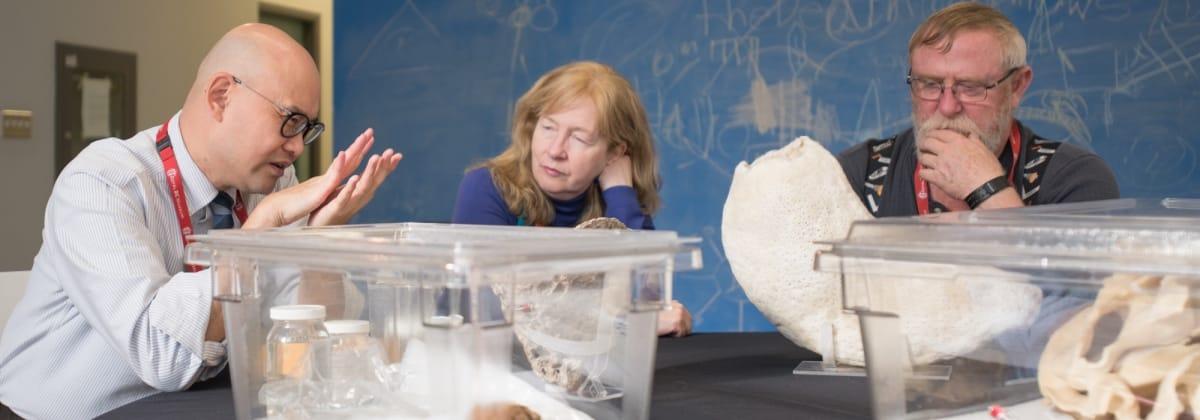
Modernization
Learn more about government’s intention to modernize the museum to protect our historic holdings and provide better access to our collections.

You’ve heard rumours about some of our most fascinating artifacts and objects. This is your chance to see them up close in an exclusive, informal setting. Join us on a four-part adult learning program as we dive deep into our world-class collections of art, photography, First Nations, marine and terrestrial life, and much more, with the kind of access usually reserved for researchers and scientists.
Led by our expert staff, you’ll explore big ideas about the role of objects, the meaning of museum collections and the human experience of things.
Through intimate conversations, dynamic lectures and behind-the-scenes visits, this informal, often hands-on program will be a feast for the mind and senses.
Explore how museum pros consider the world in a creative space for deeper thinking, doing and learning.
October 13 I 2:00- 4:30 pm
The series gets a kickstart with a behind the scenes tour to get a sense of the size, age and value of the diverse Royal BC Museum collections.
Among the fascinating objects you’ll see this week is one of our largest specimens, the skeleton of Southern Resident Orca J32 (also known as Rhapsody). Dr. Gavin Hanke, Curator of Vertebrate Zoology, will talk about this new addition to our collection, a specimen that highlights societal changes in attitudes towards orcas in the last 60 years as well as changes to the environment and over-fishing. Rhapsody’s skeleton is also a poignant example of the importance of documenting what exists in BC today.
October 20 I 2:00- 4:15 pm
This week, get up close to five exceptional objects, an impressive cross-section of the Royal BC Museums collections, a clear window into BC history and a candid peek into our professional preoccupations.
Among the superstar objects you’ll see this week is an original Emily Carr oil painting, Tanoo, Q.C.I. Don Bourdon, Curator of Images and Paintings, will lead the discussion about this monumental work from 1913, depicting the uninhabited Haida village of Tanoo. Of all the Carr works in our holdings, this is the most frequently consulted, requested for loan and exhibited.
October 27 I 2:00- 4:15 pm
This week we question the meaning of objects and ask how meaning changes over time. You will travel in small groups for intimate conversations with each curator and their object.
Among the fascinating objects you’ll see this week is a large wall piece from the Federal Immigration Detention Hospital, featuring poems by detained Chinese immigrants. Dr. Tzu-i Chung, Curator of History, will lead a discussion about the artifact, an evocative first-hand account of the experience of early immigrants from China to Canada. The poems are also strikingly contemporary, reflecting timeless sentiments about family challenges and anxiety about the risks of migrating to a new country.
November 3 I 2:00 - 4:30 pm
To wrap up we go to all corners, altitudes and depths of the province to showcase the breadth of our collections.
Among the fascinating objects you’ll see this week is a specimen once believed to have gone extinct during the Jurassic geologic period (~200-145 million years ago). Dr. Henry Choong, Curator of Invertebrate Zoology, will discuss glass sponge reefs, an international treasure that live in the very deep waters of the Hecate Strait in northern BC. Fragile and vulnerable to damage, they are a vital habitat for a wide range of marine animals. Sponge reefs are so significant that recently, Parks Canada nominated the Hecate Strait and Queen Charlotte Sound Glass Sponge Reefs as one of eight potential UNESCO World Heritage Sites.